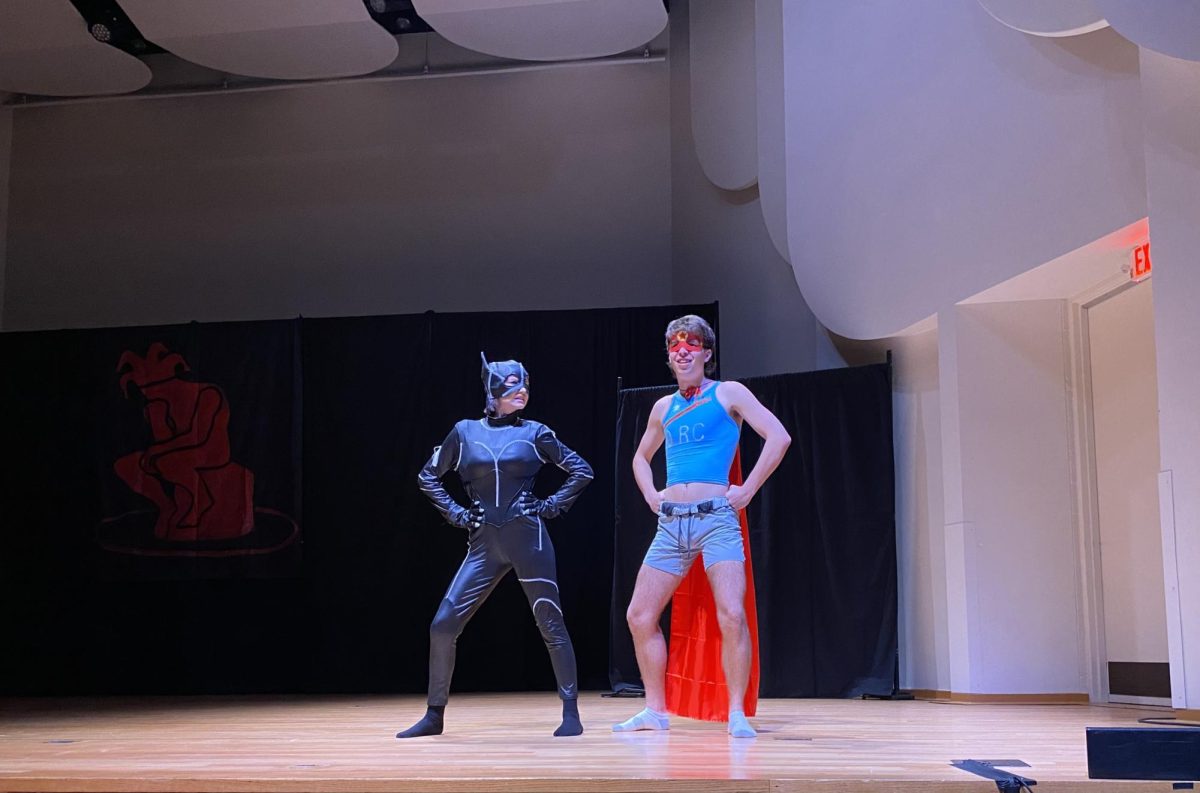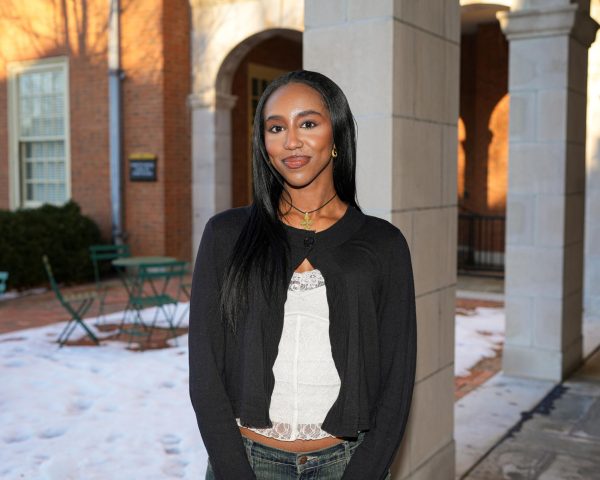Acclaimed writer, curator and performance artist Clifford Owens stood at the front of the auditorium in his usual all-black attire. With a calm demeanor, he opened his performance by inviting the audience to join him in a moment of silence, paying tribute to his dear artist friends who had recently passed away.
“The power of silence. The politics of silence. When we are silent, we hear each other breathing. We know that we are alive, and our heads are connected to our bodies,” Owens said, as the packed room, once buzzing with excitement, fell quiet.
Owens’ visit was more than a lecture — it was a living performance that blended the roles of teacher, performer, and activist. His appearance coincided with his displayed work in the “Young Gifted & Black” exhibition at Hanes Gallery alongside other influential Black artists shaping contemporary art.
For Owens, art is always in motion — constantly evolving, never static. His philosophy challenges audiences to engage with Black art not as a finished object, but as a dynamic, living process. Through his work, Owens demonstrates that Blackness, like art, is an ever-evolving force.
During his lecture, Owens spoke of a piece he acquired from the collection of David Hammons, an influential artist best known for his works during the 1970s and 1980s. It consisted of small strands of African American hair strung together on a wire with price tags attached titled, “Dollar Sale.”
“What is the value of art? My representation? My body? Black hair?” Owens posed, urging the audience to confront the commodification of the Black identity and its physical markers.
Beyond his art, Owens considers himself an ambassador for performance art, especially to young people. He travels to various college campuses to engage students with the power of performance, ensuring Black narratives continue to be told.
“I’m keeping performance art alive. I don’t want certain stories to be forgotten,” Owens explained.
The discussion also emphasized the notion of Black labor in the art world. After the lecture, Owens explained to a small group of students that he didn’t realize his talk was being recorded.
“I said, ‘No, we have to get rid of that,’ because the value of my labor is such that you are not taking my lecture and putting it in the archive of a school built on slaves,” he said.
This stark reminder of the historical foundations of many universities underlined the ongoing struggle for recognition and respect for Black labor in the arts. “I know the value of my labor,” Owens said.
He emphasized that performance art’s impact can’t be replicated. This belief in live art reflects his view that it is shaped by its audience and moment in time.
“You had to be there. You didn’t feel how the room felt. You cannot replicate that,” Owens said. “The physical and psychic toll of this kind of art cannot be understood unless you’re part of it.”
The dynamic exchange between Owens and the audience became central to the experience, illustrating the importance of audience engagement in his work.
Acknowledging the cultural context of his Southern audience, Owens smiled and said, “I know I’m in the South when I’m lecturing and people are actively going ‘mhmmm’ in response to what I’m saying.”
Freshman Cate Goldman commented “Owens’ talk was extremely authentic as he encouraged the audience to question the boundaries of art in society.”
This interaction – where the audience and the artist are co-creators in the experience – is what makes performance art so vital for Owens. It’s not just about showing a piece of art; it’s about creating a living, breathing moment together.











